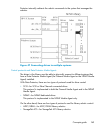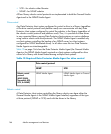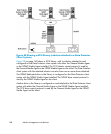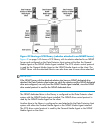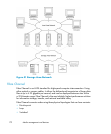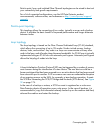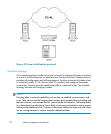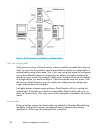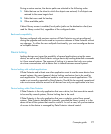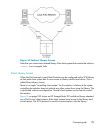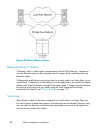
Point-to-point, loop, and switched Fibre Channel topologies can be mixed to best suit
your connectivity and growth requirements.
For a list of supported configurations, see the HP Data Protector product
announcements, software notes, and references or http://www.hp.com/support/
manuals.
Point-to-point topology
This topology allows the connecting of two nodes, typically a server and a backup
device. It provides the basic benefit of improved performance and longer distances
between nodes.
Loop topology
The loop topology is based on the Fibre Channel Arbitrated Loop (FC-AL) standard,
which allows the connecting of up to 126 nodes. Nodes include servers, backup
devices, hubs, and switches. Any node in a loop can communicate with any other
node in the loop, and all nodes share the same bandwidth. An FC-AL loop is typically
implemented using an FC-AL hub with automatic port by-pass. Automatic port by-pass
allows the hot-plug of nodes into the loop.
LIP
A Loop Initialization Primitive (Protocol) (LIP) may be triggered by a number of causes,
most common being the introduction of a new device. The new device could be a
former participant that has been powered on or an active device that has been moved
from one switch port to another. A LIP occurrence can cause an undesirable disruption
of an ongoing process on the SAN, for example, a tape backup operation. It resets
the SCSI bus connecting the SCSI/FC Bridge and the node (SCSI device). See Figure
52 on page 174.
In the case of a backup or restore, a SCSI bus reset is registered as a write error.
Data Protector aborts all operations upon write errors. In the case of backups, it is
recommended to (copy the information already backed up on the medium and then)
reformat the medium and restart the backup.
Concepts guide 173



